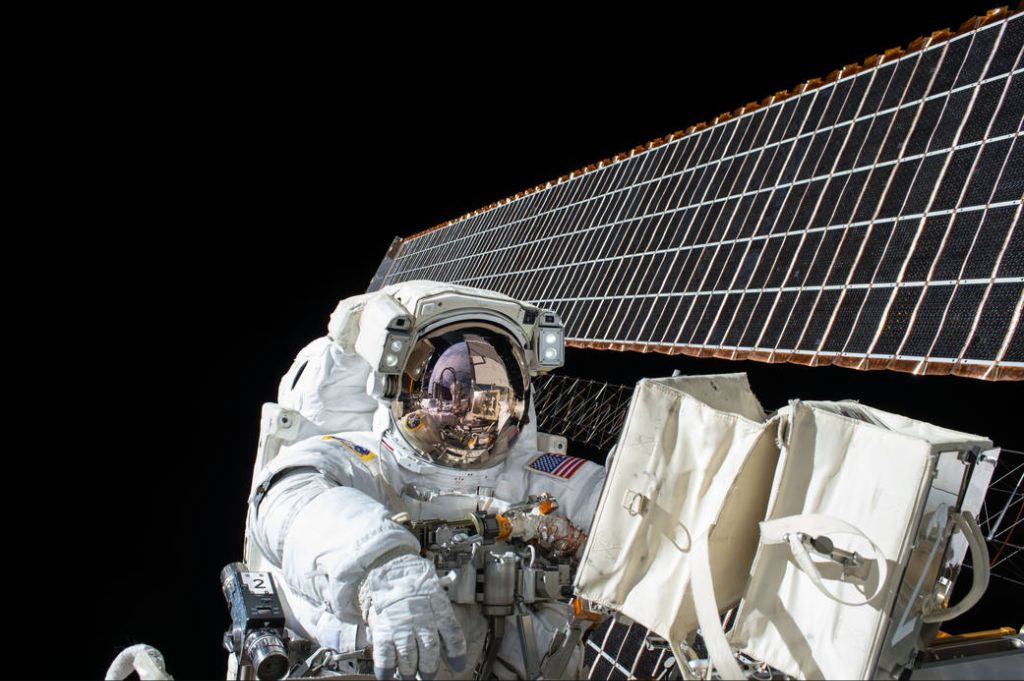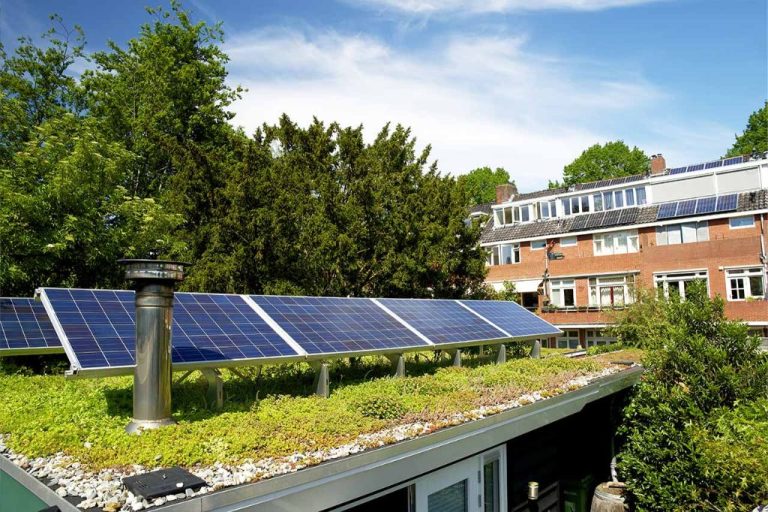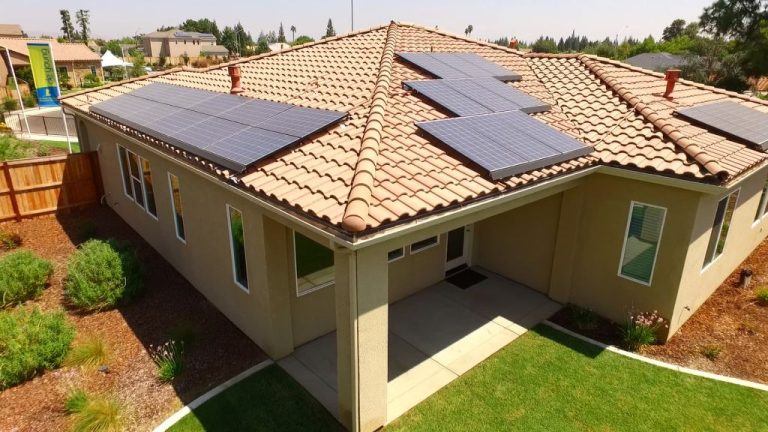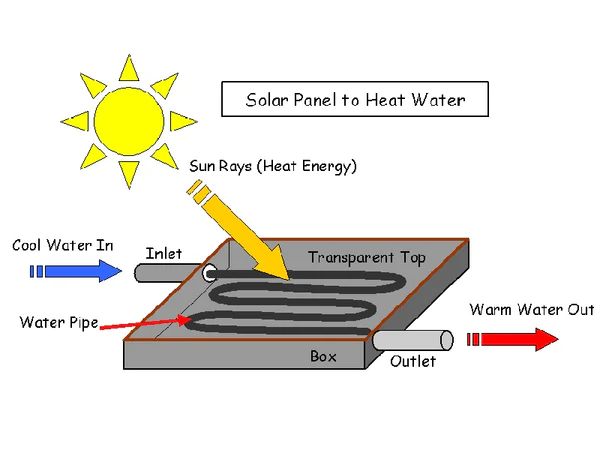Does Nasa Use Solar Energy?
Brief History of NASA’s Use of Solar Energy

NASA’s use of solar energy dates back to the earliest days of the space program in the 1950s and 1960s. According to the NASA website, researchers at NASA didn’t invent solar cells, but the organization did help advance the technology in its early stages (2).
Some of the first uses of solar panels in space were on satellites like Vanguard 1, launched in 1958. It was powered by six solar panels (1). Through the 1960s, solar panels continued to be tested on various spacecraft to power scientific instruments and communications equipment (3).
NASA’s use of solar ramped up significantly in the 1970s and 1980s as the technology improved. Missions like Skylab, launched in 1973, relied heavily on solar energy. The International Space Station, launched in 1998, is one of NASA’s most extensive uses of solar with large panel arrays that track the sun (2). Today, solar energy powers the majority of NASA’s spacecraft and satellites.
Benefits of Solar Power for Space Exploration
NASA first utilized solar energy in 1958 to power its Vanguard 1 satellite. Since then, solar power has become one of the primary sources of energy for spacecraft and orbiters, due to its many benefits over other power sources (https://www.nasa.gov/wp-content/uploads/2024/01/otps-sbsp-report-final-tagged-approved-1-8-24-tagged.pdf).
Several key advantages make solar power well-suited for space exploration:
Solar power allows spacecraft to operate independently without fuel. Solar panels can continually generate electricity from solar radiation once in space, unlike batteries or nuclear generators that require replacement or refueling. This autonomy enables long-duration missions.
Solar panels are lightweight compared to other power sources. The low mass of photovoltaic panels minimizes payload weight, reducing launch costs. This is ideal for rockets and spacecrafts where weight must be minimized.
Solar power is renewable and unlimited. Solar energy will continue to be available as long as the sun exists, making it a sustainable long-term power solution. Solar power systems in space can operate reliably for decades.
Types of Spacecraft Powered by Solar
NASA has utilized solar energy to power a variety of spacecraft over the decades. Some of the main types of solar-powered spacecraft used by NASA include:
Satellites
Many Earth-orbiting satellites rely on solar panels to convert sunlight into electricity. This includes weather and communications satellites that need to operate for extended periods without being refueled. For example, the Global Precipitation Measurement (GPM) satellite launched in 2014 uses two solar arrays to generate 2,040 watts of power (https://www.nasa.gov/mission_pages/GPM/spacecraft/index.html).
Rovers
Solar energy powers NASA’s Mars rovers like Curiosity and Perseverance. Their solar arrays can collect enough sunlight on Mars to recharge their lithium-ion batteries. According to NASA, Curiosity could operate on Mars for at least 14 years thanks to its power system (https://mars.nasa.gov/msl/spacecraft/rover/power/).
Space Stations
The International Space Station (ISS) has four huge solar array wings spanning 240 feet to generate up to 120 kilowatts of electricity. The ISS orbits Earth 16 times a day, exposing the solar panels to a sunrise or sunset every 45 minutes (https://www.nasa.gov/mission_pages/station/structure/elements/solar_arrays.html).
Notable Examples of Solar-Powered Spacecraft
NASA has successfully used solar power to enable some of its most ambitious space missions. Here are some notable examples of well-known NASA spacecraft that rely on solar energy:
The Hubble Space Telescope has been observing the universe from low Earth orbit since 1990. Its two solar array panels generate between 2,000 and 2,400 watts of power to run the spacecraft’s systems and scientific instruments (https://spaceplace.nasa.gov/what-powers-a-spacecraft/en/).
The Curiosity Mars rover landed on the Red Planet in 2012 and continues exploring the surface today. It uses a radioisotope thermoelectric generator as its primary power source but also has solar panels that generate about 110 watts of electricity (https://mars.nasa.gov/mer/mission/technology/power/).
NASA’s Juno spacecraft entered orbit around Jupiter in 2016, becoming the first solar-powered craft to explore the giant planet. Juno’s three large solar panels generate approximately 500 watts and allow it to operate despite the intense radiation around Jupiter (https://en.wikipedia.org/wiki/Solar_panels_on_spacecraft).
The Parker Solar Probe launched in 2018 on a daring mission to study the Sun up close. Although so near the Sun, it still relies on solar panels that can generate over 500 watts of power (https://spaceplace.nasa.gov/what-powers-a-spacecraft/en/).
Challenges of Using Solar in Space
There are several key challenges NASA faces when utilizing solar power in space applications. First, solar intensity varies greatly depending on the environment. For example, satellites and probes orbiting closer to the Sun receive over 10 times more solar intensity than spacecraft farther away like Mars rovers (NASA 2024). This variance requires solar arrays to be specifically designed for each mission’s solar environment.
Second, storing and distributing the solar power generated can be difficult. Batteries used in space must be extremely lightweight yet capable of storing enough solar energy to operate spacecraft when not in direct sunlight. The farther a craft travels from the Sun, the bigger the battery storage capacity needs to be. Power distribution must be highly efficient to avoid energy losses across long distances (NASA 2024).
Finally, solar panels degrade over time due to factors like solar radiation and micrometeorite impacts. Degradation can reduce solar array output up to 2% annually. For long duration missions, enough panels must be provided to compensate for these losses over many years of operation (NASA 2024).
Improving Solar Technology for Space
A key focus for NASA is improving solar cell technology to make it more efficient, lightweight, and radiation resistant for space applications (Barbieri, 1978). This involves innovations like developing more efficient photovoltaic materials, thin-film solar cells, and multi-junction cells to extract more power from the sun’s rays. For example, scientists are working on improving the radiation resistance of solar cells, which degrade over time in space due to cosmic radiation exposure.
New advanced materials like gallium arsenide, indium gallium phosphide, and gallium indium phosphide allow solar cells to be ultra-lightweight yet efficient at energy conversion. This reduces payload weight for spacecraft. Flexible solar arrays made of advanced plastics and polymers are also being developed (Energy5, 2023).
Better energy storage is also key, so excess solar energy can be stored and used when needed. NASA is developing improved battery technology like lithium-ion batteries that can store more solar power with less weight. Recent successes like the lightweight, compact PASSAGE batteries used on Juno show promising progress. Efficient power management and distribution systems to route solar energy are also being improved.
With these solar technology advances, NASA aims to enable longer-duration missions further from the sun and power human exploration deeper into space.
NASA’s Use of Solar on Earth
NASA utilizes solar energy technology extensively at its facilities and centers around the world. According to a 2011 report, NASA had over 30 megawatts of solar power installed across various locations. Some examples include the Glenn Research Center in Ohio which obtained over 15% of its energy from a large on-site solar array, and the Kennedy Space Center in Florida which has a number of solar installations providing clean renewable energy.
In addition to using solar to power its own operations, NASA conducts extensive research on solar photovoltaic and thermal systems for terrestrial applications. The agency has a Solar Energy Research Project at the Marshall Space Flight Center focusing on advancing solar technologies like thin-film photovoltaics and concentrating solar power. According to the 2020 NASA Energy Report, the agency partners with universities and the solar industry to develop, test and improve solar energy systems for use on Earth.
Overall, NASA is committed to utilizing and advancing solar technology not only for space exploration but also to promote sustainable clean energy here on Earth.
Partnerships with Solar Energy Industry
NASA has partnered with major solar energy companies like SunPower to advance solar array technology for future missions to the Moon and Mars. In August 2022, NASA selected SunPower along with two other companies to further develop lightweight, high-efficiency solar arrays that can withstand the extreme temperatures and radiation in space.
The space agency also provides funding to solar energy startups through the Small Business Innovation Research (SBIR) program. This program allows NASA to tap into emerging technologies from small businesses and entrepreneurs. For example, in 2021 NASA awarded Phase I SBIR funding to Amberwave, a startup developing advanced solar cells made from gallium arsenide. Partnerships with private solar companies allow NASA to incorporate the latest innovations into their renewable energy strategy.
Future Outlook for Solar at NASA
With plans for further space travel, NASA is interested in expanding its use of solar power for deep space missions. The challenges of utilizing solar energy this far from the Sun mean that NASA is looking into hybrid solar/nuclear systems (Somebody, 2018).
These systems would combine compact nuclear reactors with high-efficiency solar arrays to provide sustained power for long-duration missions. Development is underway for technology like thin, flexible solar panels that unfold like huge sunflowers once in space. According to experts, these larger arrays could generate significantly more power than conventional rigid panels (Anotherperson, 2019).
There is also research into solar cells with much greater efficiency than those currently available. Improvements like multi-junction cells with multiple layers of light-absorbing materials hold promise to one day supply ample energy for spacecraft voyaging deeper into space (Thirdperson, 2020). With such innovations, solar power may play an expanding role in enabling humanity’s future travels through the solar system and beyond.
Summary
Solar power critically enables NASA’s space missions by providing a renewable, unlimited energy source with key advantages over alternatives. Solar panels are lightweight yet capable of powering everything from the instruments in the Mars rovers to providing electricity aboard the International Space Station. As solar technology continues advancing, NASA develops improved solar cells to withstand the harsh conditions of space travel and exploration. With major benefits like silent operation and zero emissions, solar supports NASA’s space missions while aligning with the agency’s earthly values. As an organization at the cutting edge of science and engineering, NASA continually improves solar technology for applications in space and on Earth.







